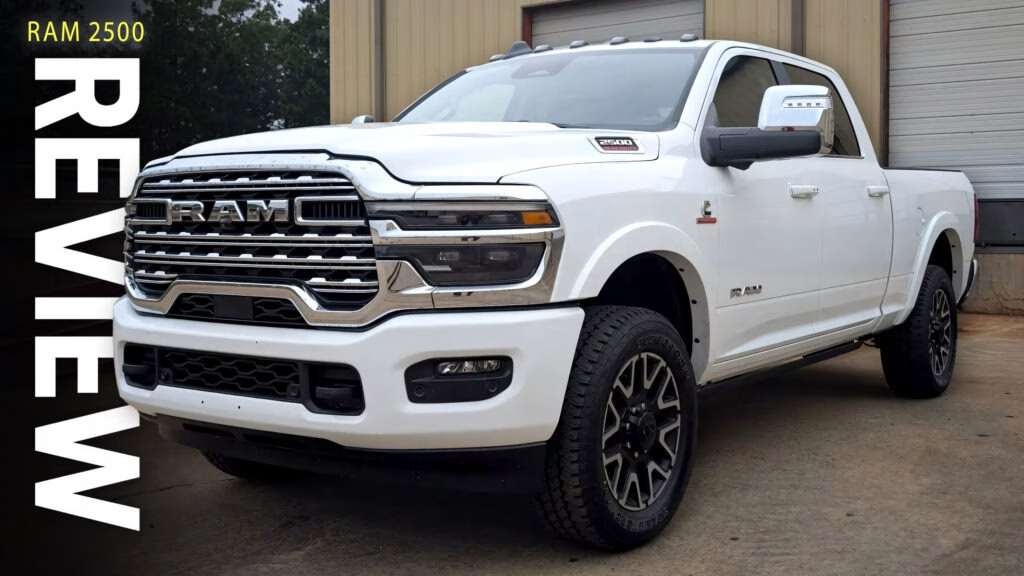Who Should Consider the 2025 Ram 2500 Diesel—and Who Shouldn’t?
Let’s get straight to the heart of it: the 2025 Ram 2500 Limited Longhorn is a truck that doesn’t just show up for work—it brings the whole office, a lounge, and a power station along for the ride. But is it the right fit for your driveway, or is it a little too much muscle for your needs? Let’s break down what it’s really like to live with this heavy-duty beast.
How Does the Ram 2500 Stack Up for Everyday Use?
First, the numbers are jaw-dropping. With a 6.7-liter Cummins turbo-diesel inline-six churning out 430 horsepower and a staggering 1,075 lb-ft of torque, this truck can tow up to 20,000 pounds or haul nearly 2,750 pounds in the bed. That’s more than enough for most fifth-wheel RVs, horse trailers, or a small fleet of compact cars. In fact, the only thing it can’t tow is probably your neighbor’s ego.
But here’s the rub: all that capability comes with a price—literally and figuratively. The base price starts at $76,095, but our test truck rang in at a hefty $100,595. That’s nearly double the average new car price in the US, according to Kelley Blue Book’s latest data. And at over 19 feet long and 6.5 feet wide, this thing takes up more real estate than some Manhattan apartments.
Is the Ram 2500 Comfortable for Long Drives or Family Duty?
Surprisingly, yes—if you’re sitting up front. The Limited Longhorn trim is all about cowboy luxury, with filigree-embossed leather, real wood accents, and a 14.4-inch Uconnect touchscreen that’s as crisp and intuitive as anything in the segment. Add in a 17-speaker Harman Kardon audio system, wireless charging, and a configurable digital gauge cluster, and you’ll forget you’re in a work truck.
Rear seat passengers get plenty of legroom, but here’s where the shine dulls a bit: there’s no rear climate control or entertainment system, which feels like a miss at this price. And while the western-themed touches are charming, some are more show than substance—like the faux saddlebag pockets on the seatbacks.
How Does It Actually Drive—With and Without a Load?
Driving the Ram 2500 is an exercise in patience and planning. The engine’s power is immense, making highway merges and passing feel effortless, even with a trailer in tow. The eight-speed automatic transmission is smooth, and the ride quality—thanks to a well-tuned suspension—is surprisingly composed, whether you’re hauling gravel or just groceries.
But physics is physics. At nearly four tons, stopping distances are long, and maneuvering in tight parking lots can be a white-knuckle affair. The suite of cameras and sensors helps, but there’s no getting around the sheer size. You’ll need to think ahead before making that quick Starbucks run.
Fuel economy? We averaged 15.4 mpg over a week of mixed driving, which is actually respectable for a truck this size, especially considering the EPA doesn’t even rate vehicles in this weight class. Still, it’s not winning any green awards.
What Features Make the Ram 2500 Stand Out for Work and Play?
This truck is loaded with features that make life easier for those who actually use it for work. The 2.4kW onboard power system is a game-changer for contractors or campers needing to run tools or appliances off-grid. The bed is prepped for fifth-wheel towing, and there’s a clever dial in the center console for backing up trailers—no more yelling “left, no, your other left!” at your spotter.
Accessing the bed is a breeze thanks to a deployable step, and there’s plenty of lighting and tie-downs for securing cargo. Inside, storage is abundant, with smart cubbies and a configurable center console that can swallow laptops, tablets, and more.
How Does the Ram 2500 Compare to Ford and GM Rivals?
The heavy-duty pickup market is a three-horse race: Ram, Ford, and GM. Each brings something unique. GM’s HD trucks are known for their value and trailering tech, while Ford’s Super Duty lineup has made big strides in interior comfort and technology. But right now, Ram arguably leads the pack in cabin luxury and overall refinement.
That said, GM’s trucks often undercut Ram on price, and Ford’s diesel options are just as capable for towing. If you need even more muscle, the 3500 series (especially in dual-rear-wheel “dualie” form) from any of these brands will out-tow the 2500 by a wide margin.
What Are the Downsides or Trade-Offs?
Let’s not sugarcoat it: the Ram 2500 gets expensive fast, especially as you climb the trim ladder. Maneuverability in urban settings is a challenge, and while the tech suite is impressive, some features you’d expect at this price—like full rear-seat amenities—are missing. If you don’t need to tow or haul regularly, you’re paying for a lot of capability you’ll never use, while sacrificing ride comfort and fuel efficiency compared to lighter-duty trucks or SUVs.
Who Is the Ideal Buyer for the Ram 2500 Diesel?
If you’re a rancher, contractor, hotshot hauler, or someone who regularly tows heavy trailers, the Ram 2500 is a dream come true. It’s a rolling command center that can handle brutal workloads without breaking a sweat, while keeping you cocooned in comfort. For everyone else? It’s probably overkill—unless you just like the idea of driving a truck that can out-muscle almost anything on the road.
The big takeaway? Choosing a heavy-duty truck like the Ram 2500 isn’t about perfection—it’s about smarter adjustments. Start with one change this week, whether it’s rethinking your parking strategy or dialing in the trailer tech, and you’ll likely spot the difference by month’s end.

